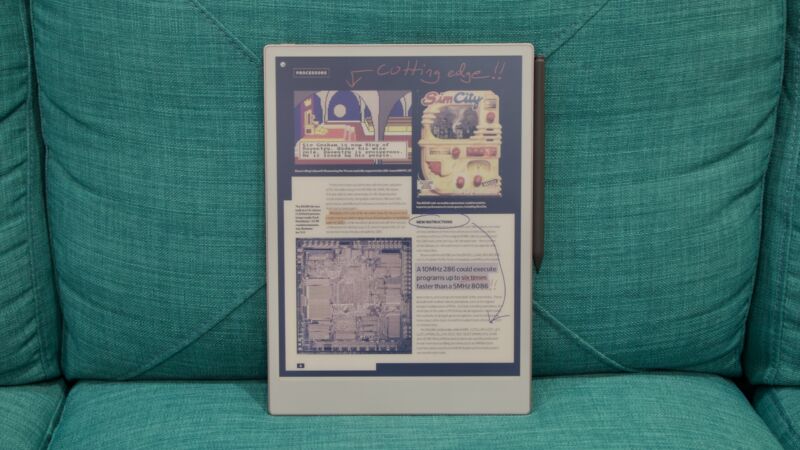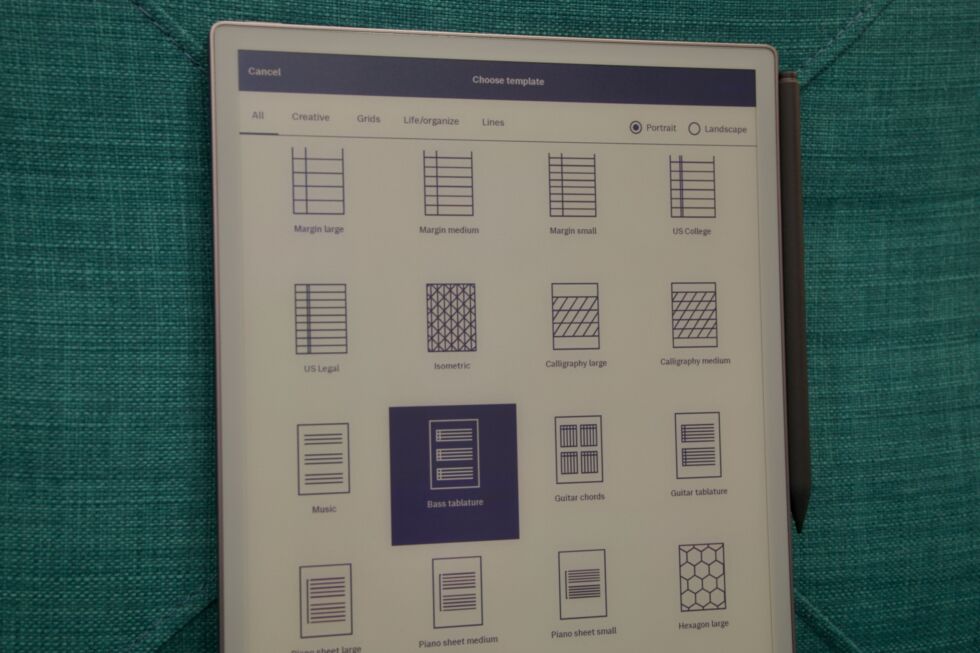
Andrew Cunningham
Our main critique of Amazon’s Kindle Scribe when it launched in late 2022—and one that still mostly holds up—was that it felt like a big e-reader with writing functionality tacked on rather than a tablet designed specifically for writing and note-taking. Though Amazon’s hardware is arguably superior (and definitely more affordable), we definitely wanted software that was closer to what was available on the reMarkable 2 tablet.
The reMarkable 2 mostly doesn’t bother with e-reader features, though it does support EPUB and PDF documents; it’s focused almost entirely on the creation and organizing of notes in various formats. And now reMarkable (the company) is out with a new reMarkable (the tablet), one that attempts to catch up with and surpass Amazon’s hardware while still keeping the focus on writing.
Writing is fun
The new $579 reMarkable Paper Plus is an evolution of the previous design—slightly larger and heavier, but with a much bigger 11.8-inch display (up from 10.3 inches in the reMarkable 2) that also adds a front-light and color e-ink support. Where most color e-readers use E Ink’s Kaleido technology, which offers faster page refresh times but relatively dull, washed-out color, the reMarkable Paper Pro uses E Ink Gallery, which has richer color reproduction at the expense of refresh speed.
Other small quality-of-life upgrades improve the writing experience; there’s marginally less space between the surface of the “paper” and the tip of the pen, and writing latency has been nearly halved, from 21 ms to 12 ms. The new Marker accessory is also an active pen now instead of an electromagnetic resonance (EMR) pen—like the newer Apple Pencils, it has a small battery that’s charged by magnetically attaching the Marker to the side of the tablet.

Andrew Cunningham
Unfortunately, you do lose compatibility with the wider universe of EMR accessories, as we discovered when we tried to use the new Marker to sketch something on a Kindle Scribe’s screen and when we tried to use the Scribe’s EMR pen on the reMarkable Paper Pro.
But what you get in exchange is a digital pen experience that feels more like writing with a pen on paper than anything else I’ve tried, whether you’re talking about older reMarkable tablets, the Scribe, Microsoft’s Surface Pro, or Apple’s newest iPads. When writing, you get the responsiveness and fluidity of the Apple Pencil Pro, but on a textured E Ink screen with a very paper-like amount of resistance.
Here, there’s really no discernible delay between when your pen hits the screen and when “ink” appears, whereas the Scribe and reMarkable 2 do have a small delay. In our usage, we noticed more delays in two scenarios. The first was when writing in color—once you’ve finished writing something, you can briefly see the text blink a couple of times as whatever you’ve just drawn is incorporated into the rest of the note you’re working on (you see something similar when using the highlighter function on the Scribe, even though that’s happening in grayscale). But this is mostly a visual pause, and it doesn’t really last long enough to get in the way of using the tablet.
The second and more noticeable place we saw lag was when we were writing on or annotating something with a dark background instead of a white one. For whatever reason, this was the only time we actually noticed a sizable lag between touching the Marker to the screen and seeing lines appear. We didn’t run into this a lot, but it’s worth keeping in mind.
The more significant functional hangups are all things that should be pretty familiar to users of any E Ink device—pauses while the tablet draws menus, pauses to wait for full-screen refreshes, just generally having to wait a beat between tapping your finger to the screen and anything actually happening. It lacks the fluidity of even an entry-level iPad. But that’s always been the trade-off with E Ink screens—you’re here for something that looks and feels more like paper, and if it makes the device feel less like a modern computer, that’s either something you don’t mind or that you actively prefer.
